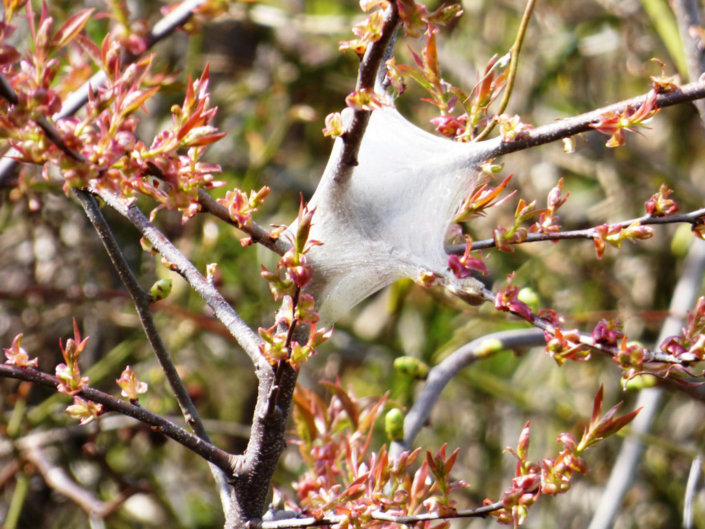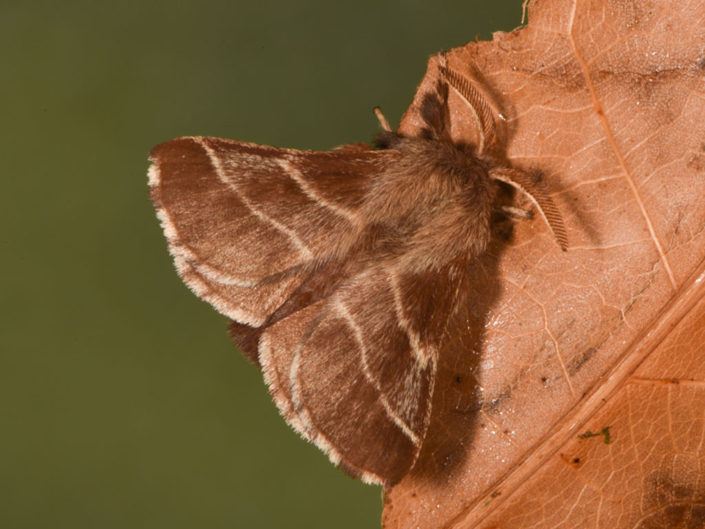Tent Caterpillars!
(left) Eastern tent caterpillar moth nest. Justine Kibbe Photo. (right) Eastern tent caterpillar moth. (Doug Tallamy Photo)
Silk nests of the eastern tent caterpillar (Malacosoma americana) began showing up on South Beach Road in late April. Not to worry! Contrary to popular belief, these nests will not kill trees, plus they provide food for bluejays, orioles, chickadees and nuthatches.
“I wouldn’t be concerned about the eastern tent caterpillar,” said entomologist Adam B. Mitchell, Ph.D. “These are native species feeding on native plants (mostly cherry trees). The caterpillars, in turn, provide food for breeding birds.
“Tent caterpillars can defoliate young trees, especially ornamentals, but native trees will recover within a month—just part of the natural process!”
Eastern tent caterpillars form a silken nest (or tent) in the crotch of tree branches, where they rest and molt. They leave the nest during each bout of feeding to “scout” for leaves to feed on, dragging a trail of silk behind them that other caterpillars will follow. They move to new feeding sites en masse, feed, and then return immediately to the tent, where they rest until the next feeding.
Approximately six weeks after hatching, the larva become fully grown, up to two inches long. They leave the nest to pupate in silken cocoons that are found on tree trunks, fences or leaf litter. About two weeks later adult moths emerge and soon deposit the overwintering eggs on trees.
The eastern tent caterpillar moth overwinters as an egg, usually in a spongy mass of 150-400 eggs. These egg masses are covered with a shiny black material that helps protect the eggs during the winter months. Once spring arrives, the larvae hatch about the same time cherry tree buds open, and the trees begin to produce young leaves, required for larval development. Also, the position of the tent is critical because these caterpillars must bask in the sun to elevate their temperatures to aid digestion.

